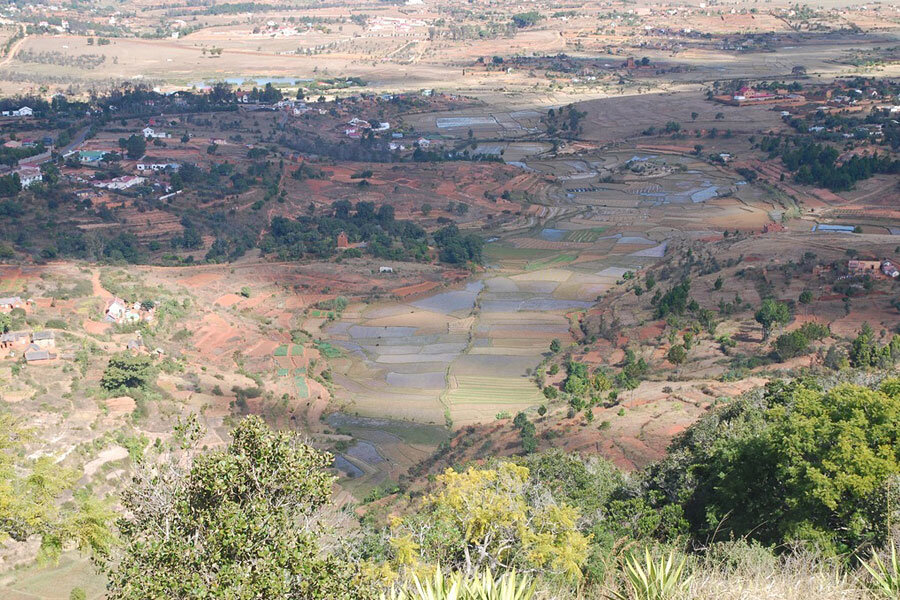Can ancient mung bean seeds solve Madagascar migration mystery?
Loading...
Madagascar may be an African nation but the national language on the island, Malagasy, is rooted in southeast Asia. Linguists have long said that this suggests a migration of people who spoke a similar Austronesian language once colonized the island nation. Although genetic evidence also hints at such a settlement, the details of that migration have remained mysterious.
With few classic archaeological clues like pot shards, a team of scientists decided to look for a different line of evidence: seeds.
By unearthing ancient seeds, the archaeologists pinpointed crops that originated from southeast Asia, as they reported in a paper published Monday in the journal Proceedings of the National Academy of Sciences. And dating those old plants could help indicate just when the migration happened.
These crops "actually provide a really good signal for some of those early colonizing events," study lead author Alison Crowther, of the University of Queensland, tells The Christian Science Monitor in a phone interview. "By looking at the crop record, we were able to see the plant seeds that they may have brought with them when they came from southeast Asia."
The team of archaeologists dug into 18 sites on Madagascar, the neighboring Comoro Islands, and various spots on mainland Africa's eastern coast. And a pattern emerged. On the islands, Asian crops, including Asian rice, mung bean, and cotton, dominate the dirt as early as the 8th and 10th centuries. But on the mainland sites, African crops dominated, with few Asian crops appearing in the archaeobotanical record before the 11th century.
"The fact that Asian crops are dominant on the Comoros and Madagascar on sites dated between the 8th and 15th centuries is interesting," Philippe Beaujard, an anthropologist with the Institut des mondes africains in France, tells the Monitor in an email. "It supports my contention that the Austronesians from the Java Sea arrived primarily in the Comoros and Madagascar," says Dr. Beaujard, who has focused on the history of Madagascar and the Indian Ocean during this time period but was not part of the new study.
Beaujard and Sander Adelaar, a linguist at the University of Melbourne who was also not part of the new study, have been debating whether this migrating population first settled along the coast of mainland Africa before moving onto the islands or vice versa.
Dr. Crowther says this part of the story is "harder to disentangle." The Malagasy language has some elements of African languages interwoven as well. But it's still unclear whether that influence happened on the island or on the mainland, particularly as the Austronesian speaking population would have had less of an influence on the already well-populated African coast.
The Asian seeds found on the Comoros add to the mystery.
Several scholars have argued that the Comoros were first populated by Austronesian speakers, then gradually became "phenotypically and linguistically Bantu" during later migrations from the African mainland, according to Dr. Adelaar.
But "if Madagascar was directly populated from Africa (and only indirectly from Southeast Asia), as some scholars (including me) believe, then the Comoros are naturally involved because they are a string of islands connecting East Africa with Madagascar," he says in an email to the Monitor. "In short, it is hard to miss the Comoros along that migration route."
Regardless of the route, he calls it "absolutely extraordinary that speakers of an Austronesian language (Indonesians in this case) managed to sail across the Indian Ocean and to settle on an island off the coast of East Africa."
Only the Vikings and the Polynesians are known to have launched such expansive migrations at sea before the colonial era, he points out. "That the Malagasy case has gone largely unperceived is very odd."
Patrick Manning, a University of Pittsburgh historian who focuses on Africa but was not part of this study, agrees that this migration "undermines the idea that people in the tropics lived in isolated communities that didn't encounter each other," he tells the Monitor in a phone interview. "You get a view of the relatively distant past as much more interactive."
And it's not just a story of history, says Crowther. "The world we live in today has been connected at a global level for a very long time," she says. Although globalization looks different today, it's "not just a modern phenomenon."








